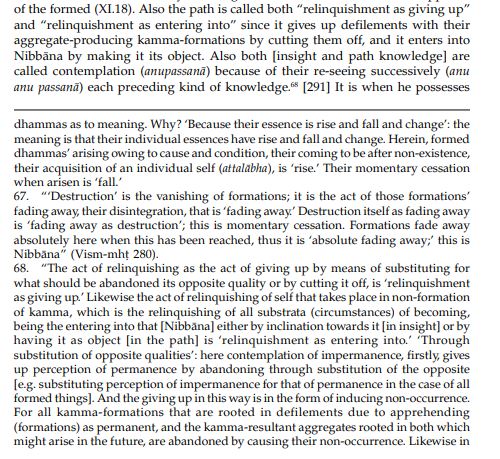Dear All
@jansen
the visuddhimagga tika:
see chapter VIII path of purification page 283-284
note 66. “What is called ‘permanent’ is what is lasting, eternal, like Nibbána. What is
called ‘impermanent’ is what is not permanent, and is possessed of rise and fall. He
said ‘The five aggregates are “the impermanent,’” signifying that they are formed
dhammas as to meaning. Why? ‘Because their essence is rise and fall and change’: the
meaning is that their individual essences have rise and fall and change. Herein, formed
dhammas’ arising owing to cause and condition, their coming to be after non-existence,
their acquisition of an individual self (attalábha), is ‘rise.’ Their momentary cessation
when arisen is ‘fall.’
A member of another forum cited this as evidence that some Theravada sub-commentaries believes each momentary element has a self…
I feel it is posssibly similar to the term sabhava (sometimes translated as own essence).
In any event what is clear is that the sub-commentary is crystal clear that each moment pases away absolutely and a new one arises just for a brief moment. So no self there at all(but these momentary elements are real.)
